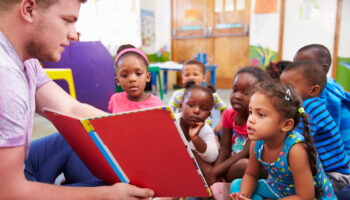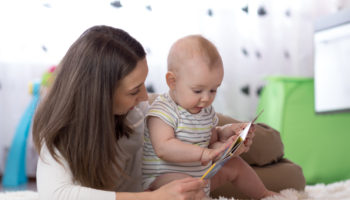Aimee Currier
You very likely read books to the children in your care daily. We use books for many purposes: education, entertainment, even some physical activity at times. My Kindergartners would get so excited when the Bookmobile would come, and they would have the opportunity to have books read to them by someone who wasn’t me! They were giddy with joy over getting to choose their own books to keep in our classroom for a month. Books were a central part of everything we did in class.
While books are a great way to engage children, have you ever considered using the art of storytelling in your classroom? The following information was taken from the National Storytelling Network.
What is storytelling? How is it different from reading a story to children? The website referenced above outlines 5 components of storytelling.
Storytelling:
Is interactive. Encourage the children to get involved in telling the story.
Uses words. What a great way to build rich vocabulary. Consider incorporating sign language or another world language.
Uses actions. Get up and move around! The children will certainly enjoy watching you and moving along with you.
Presents a story. This is what sets it apart from other art forms. You can tell a story the children are familiar with, or something completely new. Be creative and make up your own story.
Encourages the listeners’ imagination. Without the pictures in a book, the children must use their own imaginations to envision the story elements such as setting and characters. You may want to keep your stories simple at first, and include places, animals and things that the children can easily envision.
Consider extending the storytelling experience to help illustrate the connection between the spoken word and print. Repeat a simple story a few times to familiarize the children with it. Ask them what they can tell you about the story. What did a particular character say or do for example? As they dictate what they recall, write it on a chart paper. If you have older children, you can extend it further by looking at the different dictations they provided and asking which happened first, second, etc. (Now we are bringing some math into it)!
This can be an intimidating activity, but I hope you’ll give it a try. The children will surely benefit.



